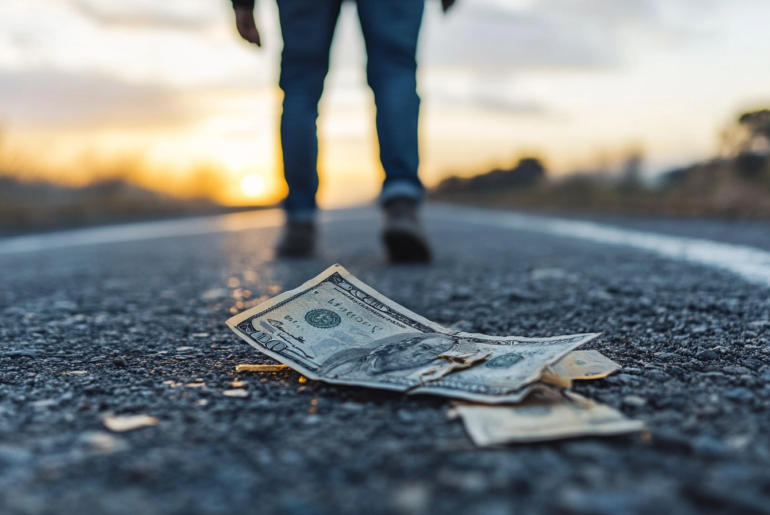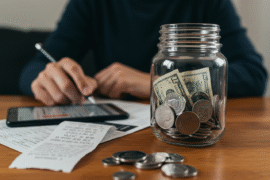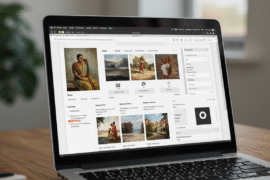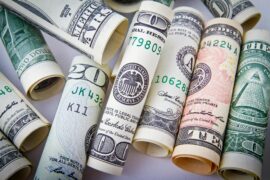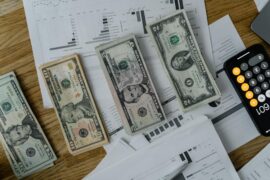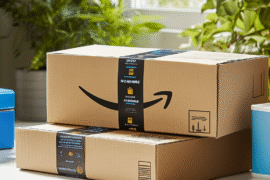This article may contain references to products or services from one or more of our advertisers or partners. We may receive compensation when you click on links to those products or services. Nonetheless, our opinions are our own.
- Key Highlights
- Understanding the Concept of a No-Spend Month and Its Benefits
- Benefits of a No-Spend Month
- Preparing for Your No-Spend Month Through Strategic Planning
- Essential Expense Budget
- Determining the Duration of Your No-Spend Challenge
- Creative Ways to Enjoy Life Without Spending Money
- Tracking Your Progress and Staying Motivated
- Engaging Family and Friends in Your No-Spend Month
- Reflecting on Your No-Spend Month Experience
- Setting Financial Goals After Your No Spend Month
- Addressing Setbacks During Your No-Spend Month
- Embracing Financial Wellness Post No Spend Month
-
Frequently Asked Questions
- What is a No Spend Month?
- Why should I consider a no-spend month?
- What expenses are allowed during a No Spend Month?
- How can I prepare for a no-spend month?
- What challenges might I face?
- How can I stay motivated?
- What should I do after completing a No Spend Month?
- Will a no-spend month impact my finances?
- Recommended Reads
Key Highlights
Embarking on a “No Spend Month” challenge can be a powerful way to reset your finances and regain control over your spending habits. Throughout the month, you will cultivate a heightened awareness around your expenses, prioritize essentials over wants, and discover alternative sources of joy that do not require opening your wallet. By the end of this financial detox, you may find yourself with newfound clarity, a healthier bank account, and a renewed sense of financial freedom.
- Review your spending habits: identify unnecessary expenses and develop healthier financial habits.
- Enhance Your Savings: Redirect surplus funds toward savings or debt repayment.
- Increase Financial Awareness: Become more conscious of your daily spending patterns.
- Discover Free Alternative: Find creative and cost-free ways to enjoy life.
- Set Clear Financial Goals: Use the challenge to define and refine your long-term financial plans.
Understanding the Concept of a No-Spend Month and Its Benefits
A month-long spending freeze can be a transformative financial experience. The core idea is to refrain from all non-essential purchases, helping you focus on your priorities and financial goals. This practice is not just a financial reset but also an opportunity for introspection. Evaluating what truly adds value to your life versus what serves as a temporary indulgence can create lasting positive change.
Benefits of a No-Spend Month
- Benefit: Impact
- Budget Clarity: Greater understanding of financial landscape
- Goal Setting: Encourages defining clear objectives
- Stress Reduction: Less financial stress, improved well-being
Preparing for Your No-Spend Month Through Strategic Planning
A No Spend Month requires strategic planning for success. Start by analyzing your spending patterns and pinpointing where you can cut back. Create a budget outlining only necessary expenses, such as rent, utilities, and groceries, while eliminating non-essential spending. Use spreadsheets or budgeting apps to track your progress.
Strategies for Success
- Meal Planning: Prepare a detailed meal plan to avoid impulse grocery shopping.
- Review Subscriptions: Pause or cancel non-essential services.
- Seek Free Entertainment: Attend community events, visit parks, or explore libraries.
- Use Cash Envelopes: Withdraw a set amount of cash for essential spending and stick to it.
Essential Expense Budget
- Expense: Budgeted Amount
- Rent or Mortgage: $1200
- Utilities: $200
- Groceries: $300
- Transportation: $150
Determining the Duration of Your No-Spend Challenge
The length of your No Spend Challenge is crucial. While a month-long effort can be impactful, consider starting with a shorter period if a whole month feels overwhelming. Gradually extend the challenge to build financial discipline and resilience.
Creative Ways to Enjoy Life Without Spending Money
Engaging in a No Spend Month encourages creative, cost-free enjoyment. Try hiking, biking, or hosting a picnic with friends. These experiences save money while strengthening social bonds and promoting well-being.
Free Activities to Try
- Attend Free Local Events: Festivals, art shows, or workshops
- Visit Your Library: Free books, online resources, and classes
- Cook at Home: Experiment with new recipes using pantry staples
- Volunteer: Contribute to the community while building connections
- Start a Hobby: Explore painting, writing, or gardening with what you already own.
Tracking Your Progress and Staying Motivated
Monitoring progress helps you stay on track during a no-spend month. Use a journal or budgeting app to monitor spending and savings goals.
Tips for Success
- Set Clear Goals: Decide what you want to achieve, whether saving a certain amount or reassessing spending patterns.
- Daily Check-Ins: Review your progress and celebrate small wins.
- Stay Accountable: Share your journey with friends, family, or online communities.
Date | Daily Savings | Total Savings | Notes or Reflections
Day 1 | $10 | $10 | Feeling optimistic
Day 5 | $15 | $50 | Skipped coffee runs
Day 10 | $20 | $150 | Found a new hobby
Engaging Family and Friends in Your No-Spend Month
Involving loved ones in your No Spend Month can make the experience more rewarding. Host a potluck dinner or game night to enjoy quality time without spending extra money. Invite them to participate in free activities like hiking or volunteering. Sharing your goals and progress fosters accountability and motivation, allowing everyone to support each other.
Reflecting on Your No-Spend Month Experience
After completing a No Spend Month, reflect on what worked well and what could be improved. Journaling or discussing your journey can solidify insights. Identify struggles, strengths, and lessons learned to guide better financial habits.
Key Reflection Areas
- Priorities: Which purchases did you genuinely miss?
- Triggers: Situations or emotions that prompted impulse spending
- Budgeting Skills: Areas you improved and where you can continue to grow
Action Item | Reason | Frequency
Set a Budget, Maintain spending awareness and Monthly
Establish a Savings goal; focus on long-term financial health; ongoing
Create No Spend Challenges | Reinforce disciplined spending | Quarterly
Setting Financial Goals After Your No Spend Month
Use your No Spend Month insights to set clear, actionable financial goals. Reflect on your spending habits and identify unnecessary expenses to create meaningful targets aligned with long-term stability.
Potential Financial Goals
- Create a Savings Plan: Allocate a percentage of income for savings
- Pay Off Debt: Prioritize high-interest debts with a structured plan
- Build an Emergency Fund: Aim for at least three to six months of living expenses
- Invest in Your Future: Research retirement accounts or other investment options
Goal | Target Amount | Deadline | Status
Savings Plan | $5000 | 12/31/2023 | In Progress
Debt Repayment | $2000 | 06/30/2023 | Not Started
Emergency Fund | $10000 | 03/31/2024 | Planned
Addressing Setbacks During Your No-Spend Month
Challenges will arise, and reflecting on them is crucial. Consider recording what went smoothly and what did not work as expected. Identify impulses, emotions, or triggers that led to extra spending. By recognizing these patterns, you can plan better responses and prevent similar setbacks in the future.
Key Reflection Areas
- Priorities: Identify purchases that genuinely matter
- Triggers: Understand what situations cause unnecessary spending
- Budgeting Skills: Evaluate improvements and pinpoint ongoing needs
Action Items
- Set a Budget: Maintain monthly awareness
- Create a Savings Plan: Focus on long-term financial health
Embracing Financial Wellness Post No Spend Month
Once your challenge ends, transition from reflection to action. Insights from the No Spend Month can guide you in creating concrete financial stability and growth goals. Revisit your budgeting approach, adjust your savings contributions, and maintain mindful spending as you build a healthier relationship with money.
Frequently Asked Questions
What is a No Spend Month?
A No Spend Month is a financial challenge in which you avoid non-essential expenses for a set period, typically one month while covering only necessary costs like rent, groceries, and utilities.
Why should I consider a no-spend month?
This challenge helps reset financial habits, heighten awareness of spending patterns, and increase savings. It encourages prioritizing essential needs over discretionary wants.
What expenses are allowed during a No Spend Month?
Permitted expenses usually include housing, utilities, groceries, basic toiletries, and transportation. Define these essentials before starting.
How can I prepare for a no-spend month?
Review your current spending habits, establish clear goals, and create a detailed budget. Plan free activities to stay motivated.
What challenges might I face?
Social invitations or habits can tempt you to spend. Adjusting to a spending-free routine can be difficult initially, but preparation can help you remain committed.
How can I stay motivated?
Track your progress, celebrate small milestones, and share your journey with others. Remember the reasons you started the challenge.
What should I do after completing a No Spend Month?
Reflect on the insights gained, refine your financial habits, and adopt sustainable strategies that preserve the challenge’s benefits. Consider periodically repeating No Spend Months.
Will a no-spend month impact my finances?
Yes. Many participants see noticeable savings and long-term improvements in spending habits. This challenge fosters greater financial discipline and encourages sustainable money management.

Reviewed and edited by Albert Fang.
See a typo or want to suggest an edit/revision to the content? Use the contact us form to provide feedback.
At FangWallet, we value editorial integrity and open collaboration in curating quality content for readers to enjoy. Much appreciated for the assist.
Did you like our article and find it insightful? We encourage sharing the article link with family and friends to benefit as well - better yet, sharing on social media. Thank you for the support! 🍉
Article Title: No Spend Month: Transform Your Finances in Just 30 Days
https://fangwallet.com/2025/03/02/no-spend-month/The FangWallet Promise
FangWallet is an editorially independent resource - founded on breaking down challenging financial concepts for anyone to understand since 2014. While we adhere to editorial integrity, note that this post may contain references to products from our partners.
The FangWallet promise is always to have your best interest in mind and be transparent and honest about the financial picture.
Become an Insider

Subscribe to get a free daily budget planner printable to help get your money on track!
Make passive money the right way. No spam.
Editorial Disclaimer: The editorial content on this page is not provided by any of the companies mentioned. The opinions expressed here are the author's alone.
The content of this website is for informational purposes only and does not represent investment advice, or an offer or solicitation to buy or sell any security, investment, or product. Investors are encouraged to do their own due diligence, and, if necessary, consult professional advising before making any investment decisions. Investing involves a high degree of risk, and financial losses may occur including the potential loss of principal.
Source Citation References:
+ Inspo
There are no additional citations or references to note for this article at this time.
